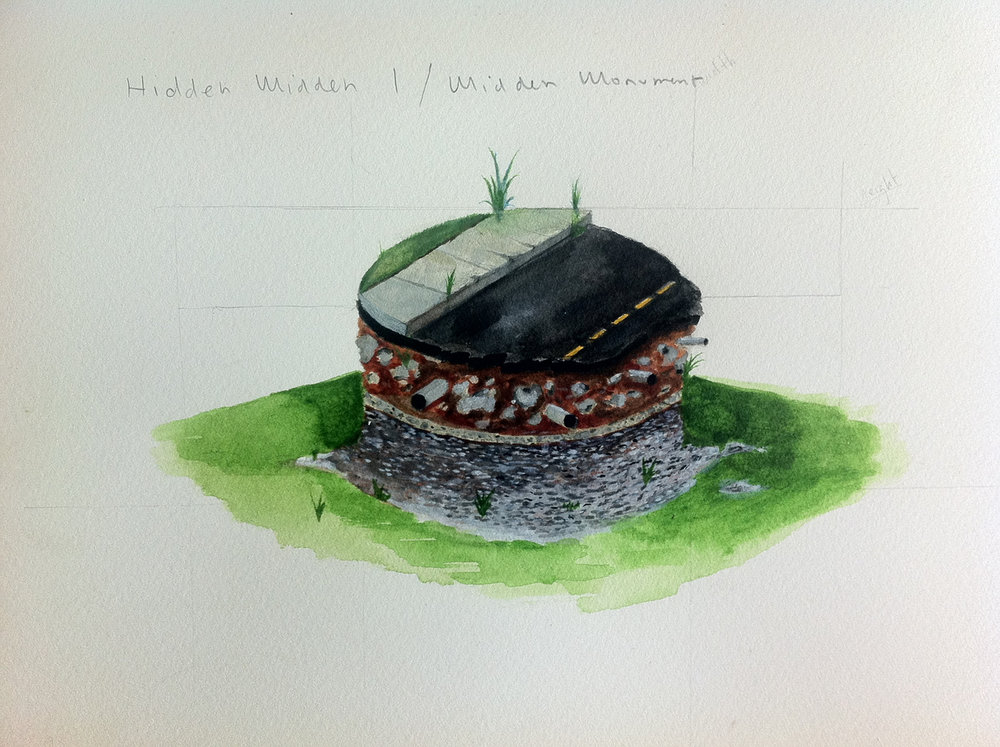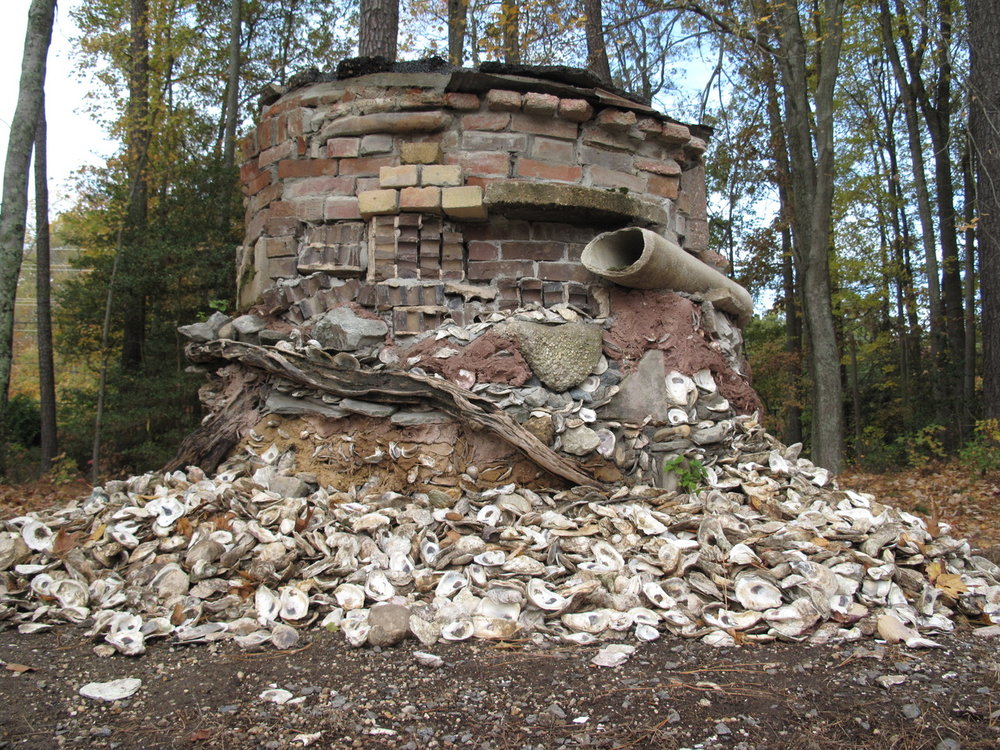oyster shell middens
 John Heron, Hidden Midden 1. 2011
John Heron, Hidden Midden 1. 2011
We are talking about numbers of oysters at an almost inconceivable scale: there is an Oyster Shell Beach in Hong Kong, Oyster Bays in both New York and New South Wales, Oyster Creek in New Jersey, Oyster Point in San Francisco, Oyster Cove on Vancouver Island, Oyster Bed in Prince Edward Island. There is an Oyster, Virginia.
Oyster middens can be miles wide: two kinds, the discards of oyster-eating peoples, and natural banks of oyster shells on beaches. According to Kaitlin Pomerantz, the erosion of empty shells releases calcium into the water needed to build new oyster shells, plus providing a foothold and a habitat for new oysters.
However, tons of oyster shells were used as road beds in the early twentieth century; more tons were ground up for chicken feed and agricultural use. It is a similar story to the mountains of buffalo bones photographed beside the CPR line in Saskatchewan in the 1890s: destination, fertiliser. Oysters are under threat from over harvesting and the removal of habitat. So, nothing new then.
Pomerantz has built a monument, Hidden Midden, for Chesapeake Bay (between Maryland and Virginia), not quite as tidy as the drawing above, but better: it is topped by a slab of asphalt road that registers the destruction of oyster middens, and offers a footfall for occupation, not for oysters unfortunately given that it is in a sculpture garden, but for other kinds of life.
 Kaitlin Pomerantz, Hidden Midden, Annmarie Sculpture Garden, Solomons, Maryland. November 2011.
Kaitlin Pomerantz, Hidden Midden, Annmarie Sculpture Garden, Solomons, Maryland. November 2011.
